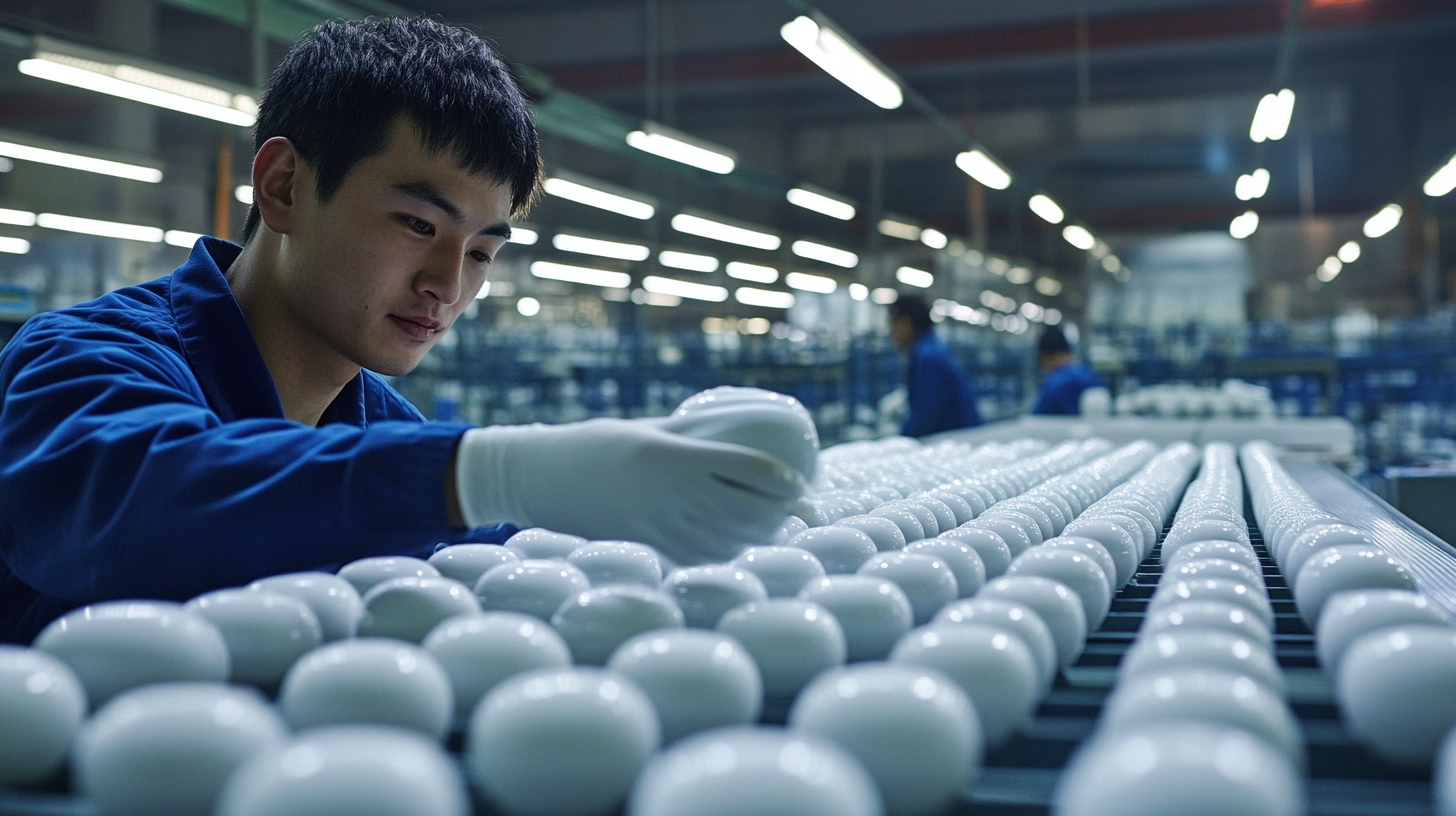In recent years, the global trade landscape has been marked by escalating tariff challenges, particularly between the United States and China. However, amidst these economic headwinds, Chinese manufacturers—especially those specializing in ceramic cartridge water mixers—have demonstrated remarkable resilience and adaptability. This blog will explore how the innovative design, quality craftsmanship, and strategic marketing of ceramic cartridge water mixers have enabled these products to not only withstand the pressures of tariffs but also thrive in the competitive US market. By examining the unique approaches taken by leading Chinese brands, we will uncover the key drivers of their success and the strategies that allow them to maintain growth despite increasing trade barriers. As consumer demand for efficient and durable plumbing solutions continues to rise, it is clear that the market for ceramic cartridge water mixers remains robust, presenting both challenges and opportunities for manufacturers navigating these turbulent economic times.

Amid the ongoing tariff pressures in the US market, the ceramic cartridge mixer industry is witnessing notable shifts that highlight resilience and innovation among Chinese manufacturers. As import tariffs fluctuate, many companies are pivoting towards enhanced product quality and adaptive marketing strategies to maintain competitiveness. This transition reflects a broader trend where quality has become paramount, leading brands to invest in advanced technology and sustainable practices that appeal to eco-conscious consumers.
Additionally, the growing demand for smart home solutions is paving the way for modern ceramic cartridge mixers equipped with intelligent features. Manufacturers are responding by integrating technology that improves functionality and user experience. This trend not only caters to the evolving preferences of consumers but also positions these products as premium options in the market. As companies navigate these tariff-induced challenges, their focus on merging innovation with market demands will play a crucial role in capturing a larger share of the US ceramic cartridge mixer landscape.

In the wake of increasing tariffs, global supply chains have undergone significant restructuring, particularly affecting industries reliant on cross-border trade. China's water mixer industry, which has established itself as a leader in ceramic cartridge technology, presents a compelling case study. The imposition of tariffs on Chinese goods in the US market has prompted manufacturers to rethink their strategies, such as adjusting pricing structures and exploring alternative supply chain routes. This situation has not only affected pricing but also forced companies to innovate in design and functionality to maintain competitive edges.
Faced with these challenges, China's best ceramic cartridge water mixers have leveraged their strengths to thrive. By focusing on quality improvements, investing in new technologies, and enhancing customer service, these manufacturers have managed to navigate through tariff obstacles. Additionally, collaboration with local distributors in the US has allowed them to gain valuable insights into consumer preferences, helping tailor their products to meet market demands effectively. As the landscape of global supply chains continues to evolve, adaptability and innovation remain crucial for success in an ever-changing economic environment.

In the context of rising tariffs imposed by the US, Chinese manufacturers of ceramic cartridge water mixers have developed innovative strategies to maintain their competitiveness in the American market. As tariffs disrupt traditional trade channels, these companies are focusing on enhancing their supply chain resilience. For instance, some manufacturers are investing in local production facilities or forming partnerships with US-based firms to circumvent import duties while still delivering high-quality products to consumers.
Additionally, these companies are leveraging technology and digital platforms to reach a wider audience and streamline operations. By adopting e-commerce solutions and optimizing their logistics, they not only improve their operational efficiency but also mitigate the risks associated with international trade uncertainties. Emphasizing adaptability and innovation, Chinese ceramic cartridge water mixer manufacturers are redefining their approach to the US market amidst evolving tariff landscapes, showcasing a proactive response to external economic pressures.
This pie chart illustrates the market share distribution of ceramic cartridge water mixers in the US market for the year 2023. Chinese manufacturers hold a significant portion (50%) of the market, showcasing their ability to navigate tariff challenges effectively.
The demand for high-quality ceramic cartridge water mixers in the US market has seen significant growth in recent years. Consumers are increasingly seeking durable, reliable, and aesthetically pleasing fixtures for their kitchens and bathrooms, leading to a surge in the popularity of ceramic mixers. These products not only enhance the overall design of a space but also offer superior performance, such as precise temperature control and smooth water flow. This shift in consumer preferences is driving manufacturers to focus on innovation and quality, ensuring their products meet the rising expectations of American consumers.
Moreover, the market landscape presents unique challenges and opportunities for manufacturers, particularly those based in China. Despite navigating tariff obstacles, Chinese brands are harnessing their strengths in design and production efficiency. By emphasizing quality and leveraging advanced ceramic technology, these manufacturers can cater to the demand for high-performance mixers. Their ability to provide cost-effective solutions without compromising on quality allows them to thrive in the competitive US market. As consumers continue to prioritize high-quality home fixtures, the ceramic cartridge mixer market is poised for further expansion, creating a vibrant opportunity for industry leaders.
Navigating the complexities of export tariffs has become a significant hurdle for many Chinese brands seeking to penetrate the US market, particularly in the ceramic cartridge water mixer industry. Despite these challenges, several Chinese companies have strategically adapted their product development processes to not only mitigate the impact of tariffs but also to thrive. According to recent industry reports, brands that invest in understanding the nuances of local preferences and regulatory frameworks are more likely to succeed. For instance, market analysis indicates that nearly 75% of successful brands focus on tailoring their products to meet specific consumer demands, thereby increasing their market appeal despite higher costs.
In addition to product adaptation, collaboration with local distributors has emerged as a vital strategy for overcoming tariff challenges. By establishing strong partnerships, Chinese brands can enhance their market visibility and streamline their distribution channels. Reports show that companies engaging in strategic partnerships have reported a 30% increase in sales compared to those relying solely on direct exports. This approach not only helps navigate tariff barriers but also fosters brand loyalty among American consumers, demonstrating the resilience of Chinese brands in a competitive landscape.
This bar chart illustrates the market share of successful Chinese ceramic cartridge water mixer brands in the US market, showcasing their ability to thrive despite export tariffs.
